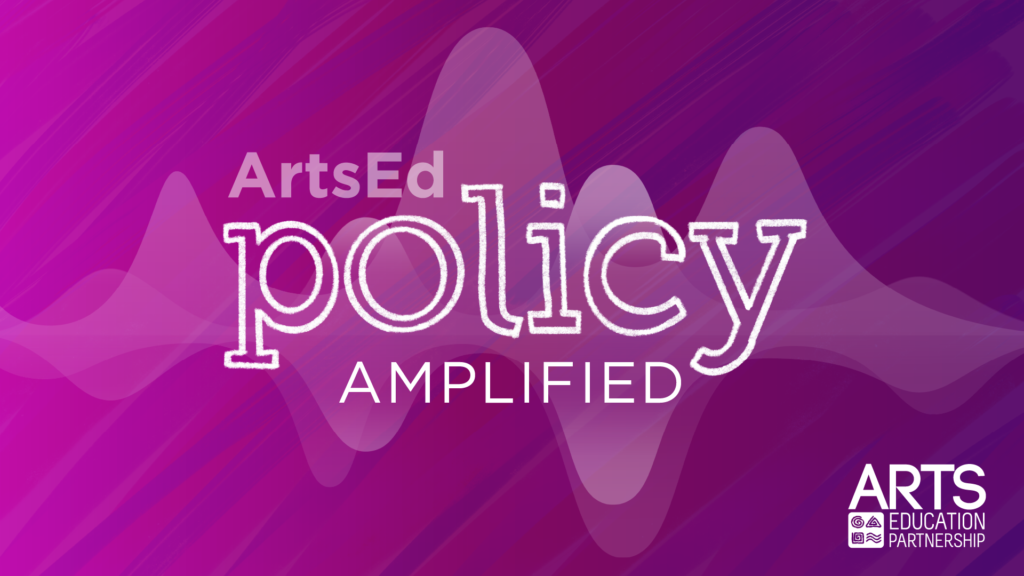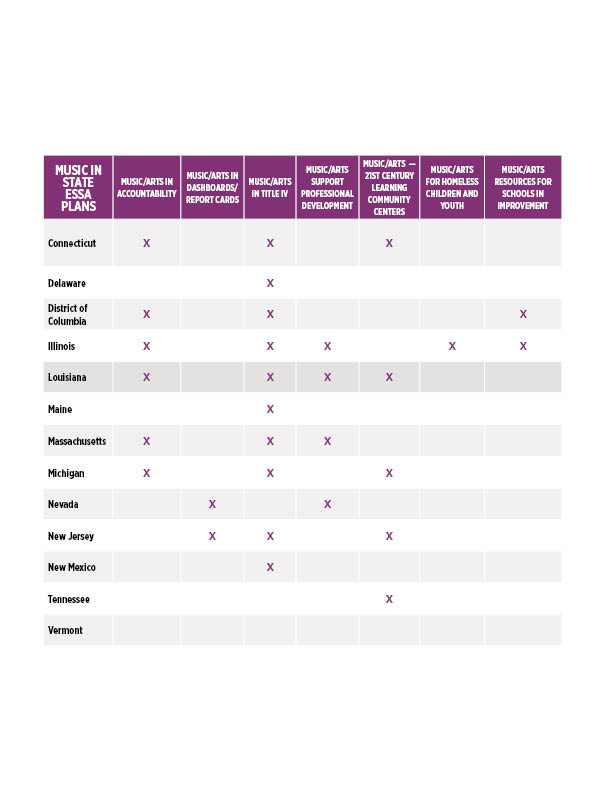How Does Arts Education Fare in the First Round of State ESSA Plans?

The National Association for Music Education’s mission is to advance music education by promoting the understanding and making of music by all. We are a partner organization of the Arts Education Partnership (AEP), sharing the belief that all students benefit from the arts as part of a well-rounded education. The passage of the Every Student Succeeds Act (ESSA) has presented new opportunities for the arts and we have anxiously awaited to see how states would implement the new law. As of April 27, 2017, 12 states submitted state accountability plans to the U.S. Department of Education. The arts were included in most of these first round plans and this blog provides the highlights.
60 percent of the submitted plans address access and participation rates in arts education as part of state accountability and/or reporting systems
Six states are including access and participation rates in arts education as part of the state’s planned accountability system: Connecticut, Illinois, Louisiana, Massachusetts, Michigan and the District of Columbia (D.C.). While the devil will be in the details, nearly half of all state ESSA plans incorporate arts education data into the accountability systems as part of a series of “additional indicators” as allowed under the law. The majority of these states are taking time to build these data sets prior to granting them weight in the accountability system. While arts education data will not drive the accountability system in any of these states, including these data shows that the arts are valued within the state’s public school system.
An additional two states, Nevada and New Jersey, are including arts education data as part of the state’s dashboard or school report card system. While this is new for Nevada, New Jersey has been doing this for several years, and in the next school year will be able to disaggregate the data based on sub-group populations, such as gender and race.
70 percent of the submitted plans address the arts as part of a well-rounded education
Title IV, Part A, or the Student Support and Academic Enrichment (SSAE) grant, represents the new funding opportunity to support a well-rounded education through ESSA. Of the plans reviewed, the vast majority of states have included mention of the importance of arts education within their state plans for Title IV, Part A. Several states call out that Title IV funds can be used to right inequities in access to arts education (Michigan); others call out the need to support districts and schools in making decisions based on their local needs (New Mexico).
Congress appropriated $400 million for SSAE in FY 2017, with states having the option to distribute the funds via a state-level competition, instead of by formula out to districts.
38 percent of the state plans call out arts education within their after-school 21st Century Community Learning Centers programs.
Five states – Connecticut, Louisiana, Michigan, New Jersey and Tennessee – specifically list arts education as part of what their 21st Century Community Learning Center programs fund and support. These programs were first funded under No Child Left Behind. Additional Areas of Interest
Additional Areas of Interest
States included mention of arts education in other areas of the ESSA plans, including school improvement (D.C., Illinois), professional development (Massachusetts, Louisiana) and support for homeless children and youth (Illinois).
What’s next?
While the U.S. Department of Education reviews submitted plans, the remainder of the states will be working on finalizing their plans for submission in September. Arts education supporters are encouraged to participate in their state’s ESSA work as part of the required meaningful consultation of stakeholders. Having access to examples of how arts education have been supported by states that have already submitted, provides models to share with your state leaders this summer.
For more information about the arts and ESSA, visit AEP’s ESSA and the Arts Resources.
This blog post is a guest post by Lynn Tuttle, director of public policy & professional development at National Association for Music Education.



